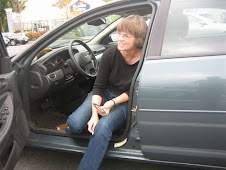This is the book about the West that I have been looking for all year: much more on the mark than Devil's Gate or Circle the Wagons or Plains Song. The Worst Hard Time is a book about the Dirty Thirties, the Dust Bowl, set primarily in the Oklahoma Panhandle, as written by Timothy Egan, a Pulitzer Prize winning journalist. He is writing about pioneering hardships as treacherous as those in the Utah book and about farm family tenacity as found in our selection for Nebraska. But it is Egan's writing talents that make his story sing, while the others drone on monotonously.
I also have decided that this story beats the Mormon migration because it portrays lives of people "being there" as opposed to "getting there." Comparing the two along a dimension of character motivation is interesting, except that I found it more interesting to see intent executed in daily tribulations rather than just inspiring relocation.
Egan is describing hellish lives of those homesteaders / nesters who stuck it out as long as they could during the "drouth" and dust storms and their ensuing impoverishment and killer disease. Being lured to the Panhandle, No Man's Land, the last undeveloped area in America, with promises of low cost acres, these families had a few good years, especially during World War 1 when government policies further encouraged the expansion of land devoted to the cultivation of wheat by guaranteeing high prices. Wildcat speculation ensued, further plowing under the native grass by absentee landowners. The author clearly lays the cause of the Dust Bowl to these land and farming policies, exacerbated by the lack of information and support for land-preserving farming techniques.
The magnitude and frequency of the dust storms, the nuances in the color of the dust depending on which state it was eroded from, the horrific physical symptoms of inhaling fine particulate matter for years, the sense of being held hostage by inaccessible roads and machine-stopping static electricity, the plagues of grasshoppers and jack rabbits -- the litany of curses is endless. But the only thing that does not blow away was the grit of the people.
The Slackers' search for the meaning of place in a life is herein offered another perspective. In The Worst Hard Time, place of origin is so weathered away as to be something unrecognizable ... no familiar scenery, no animals, no neighbors, no household belongings. Yet the Panhandlers remain marked by the memory of their former surroundings and their hope for its rejuvenation.
I have never been through the Panhandle, only driving up 35 straight through the middle of Oklahoma and then hanging a left on to 70, to drive interminably through the Kansas prairie. Seeing the open, grass-covered land there makes it hard for me to envision several states heading towards becoming the Great American Desert. It is difficult to associate a reclamation being needed to have it look as it does today.
As I finished The Worst Hard Time, I picked up Belonging, for Kentucky, and even after only three chapters, I am forced to think again about the over-development of land and the effect of a boom and bust, flood and drought cycle on a person's life and the values one acquires from a culture rooted in the surrounding environment. Both are nudging me to read You Can't Go Home Again and Look Homeward Angel to further explore how a place changes yet remains indelibly the same in the blood and the heart.
Wednesday, August 5, 2009
Subscribe to:
Post Comments (Atom)



No comments:
Post a Comment